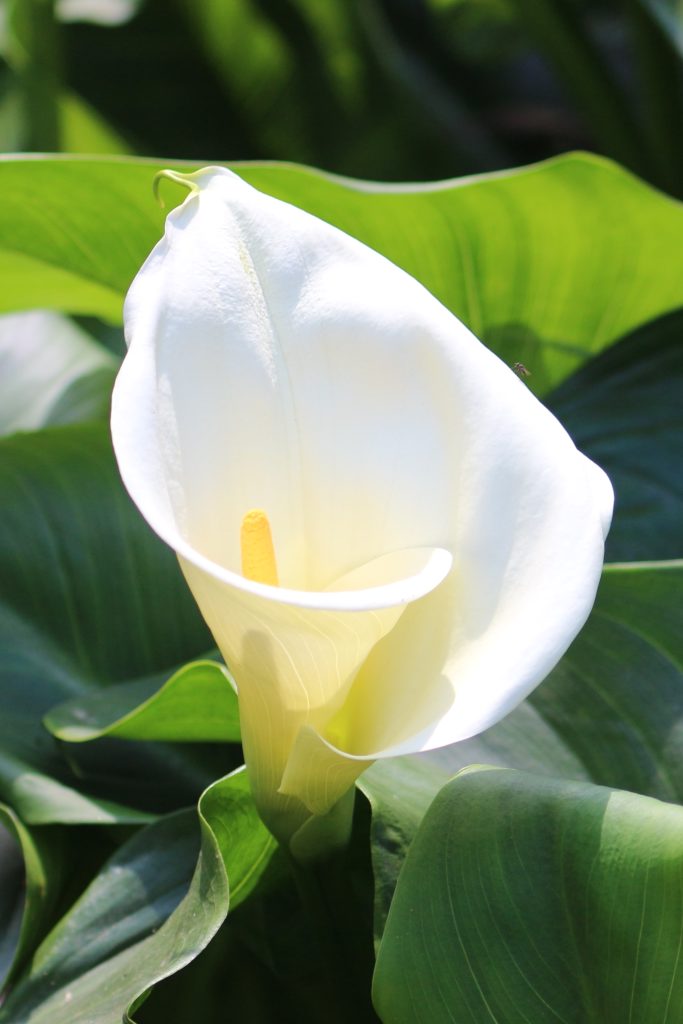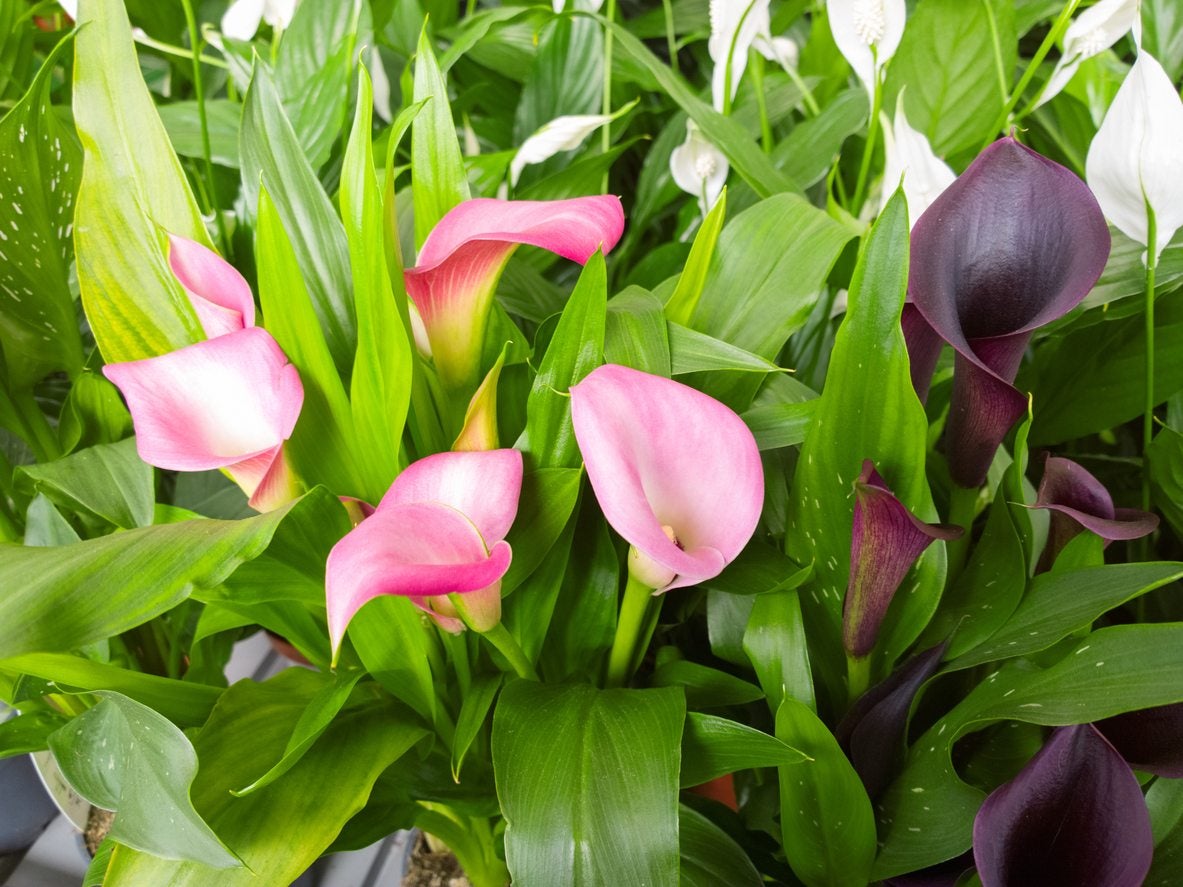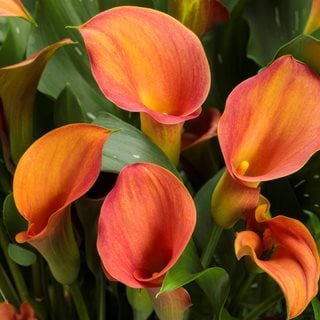Before I explain how to deadhead calla lilies, I should point you that they are perennial and hardy in zones 7 to 10. It is simpler to cultivate them from rhizomes directly than from seeds. It would grow taller in a year, and deadheading calla lilies is crucial so the plant doesn’t expend additional energy on withered blossoms.
Deadhead With a pair of pruners, we remove all the stems from the withered calla lily blossoms. There are no flowers on the calla leaves for the following season. Don’t take deadheaded calla lilies somewhere too chilly; simply relocate them indoors to a warm location. Calla lilies are hardy in zones 7a to 10b, therefore individuals in these regions typically don’t need to trim off their leaves. However, those in zones 1-6 should dig up their calla lily rhizomes, wrap them in a paper bag, and store them in a cool location.
These plants are often cultivated outdoors, and if planted in pots, they should be put in a bright location where they may receive direct sunlight. These calla lilies would be content if you placed them in a suitable light area because they enjoy direct sunshine. Let’s learn everything there is to know about deadheading calla lilies.
Table of Contents
Deadheading Calla lily
Deadhead With a pair of pruners, we remove all the stems from the withered calla lily blossoms. There are no flowers on the calla leaves for the following season. Don’t take deadheaded calla lilies somewhere too chilly; simply relocate them indoors to a warm location.
Many flowering plants, where we deadhead the flower, create additional of these blooms, however our calla lilies don’t do that. Calla lilies can be deadheaded to conserve the plant’s energy, which is utilized to produce withered flowers.
There was just one flower bloom I saw in the early spring and a second flower bloom in the late summer when I was cultivating calla lilies in pots. The next year, I’ll cultivate a calla lily using bulbs once more. This time, I counted more than five flower blooms, which has helped me understand how many blooms a calla lily will generate.
The numbers mean nothing, but it’s quite normal for there to be 2 or 7 at periods when growth is a natural process.
Many people even questioned why you deadhead calla lilies. And I add that there are three factors I’d like to share:
What occurs if calla lilies are not deadheaded?
Calla lilies may begin to generate seeds after the blossom has entirely withered if you don’t deadhead them. Every flower loses all of its petals, leaving only the female portion, which develops into a fruit. I call it a fruit because it produces seeds, which many gardeners utilize to spread calla lilies out over a huge region.
Uses for calla lilies include bouquets, decorations for weddings and other events, and much more. Because they are used throughout the party venue, the management sells these flowers when wedding season arrives.
Calla lily Care after Deadheading
Even after deadheading a calla lily, the parent plant continues to grow and have green leaves. As the leaves slowly transition from green to yellow and eventually brown, fall is approaching, and most blooms will begin to fade. The flowers will still fade in the next season even if the blooms are left on. Petals may fall off; just the female portion, which is where the fruit is made by the flower, remains. It’s likely that after the fruit has formed, the calla lilies won’t bloom because the fruits will then start to produce seeds. We deadhead the calla lily flower stem from the bottom for this reason. In order to care for calla lilies after deadheading, follow these steps:
if successful, our plants will be kept for the following year.
After Deadheading, New Season
Temperature should be between 65 and 76 degrees F, but don’t worry about this; instead, just make sure the plant gets adequate sunlight. Water it anytime the soil seems dry. Happy New Year!
About Calla lily Deadheading And Calla lily Pruning
Deadheading calla lilies is a sort of pruning that is necessary to get the plant to bloom once more during the current or following season. It promotes the growth of flowers. If you ever have lilies, you can even encourage them to rebloom by deadheading the spent or existing flowers. For plants that contain blooms, deadheading is appropriate, although trimming is appropriate for all plant types. To prune or deadhead your plant, you’ll need pruning or cutting tools. Everyone, not just me, advises that you clean or sterilize your pruning blade to remove any bacterial infections. By doing it this way, you can safely prune or deadhead your plants without risking an infection.
When deadheading some lilies, you simply need to remove the flower; but, with calla lilies, you also need to remove the stem (branch) from the base of the wasted flower. Never touch the main trunk, any branches, or stems that have leaves on them. Plants must have leaves in order to thrive and provide nourishment. I make this statement because fruit grows after flowers, but before leaves.
Every year, deadheading is necessary for your calla lilies and it’s enjoyable gardening.
Check as well
What Does the Calla Lily Mean and Symbolize?
Do Calla Lilies Grow Every Year? – Returning Each Year
What’s More – Infections & prevention
For airflow and to prevent fungal infection, calla lily pots need to be cleaned. So what I’m saying is that the majority of mulch is produced when a plant dies, its blossoms fall off, and its ruins remain on the soil. The soil can be quickly covered by these withered leaves or blossoms, which makes it difficult for the water to dry. The accumulated water then remains in the soil, where it can lead to root rot and fungal infections. Cleaning is crucial since it deters pests from attacking the plant and helps keep it clean. Use fungicide to cure the issue if your calla lilies develop a fungal infection that causes the leaves to become yellow or brown.
Shop for calla lily potting soil on Amazon.
Shop on Amazon for the best pot with saucer for calla lilies.
Amazon has the best fertilizer for calla lilies.
My thoughts
Calla Lilies in Pots: Maintenance and Development (They Do Grow Well)
Calla Lilies: When Do They Bloom? (Seasons, perennial in Florida)
Meaning and Symbolism Of The Calla Lily Flower
How to Fix Calla Lily Leaves Turning Yellow (Reason and Solution)



